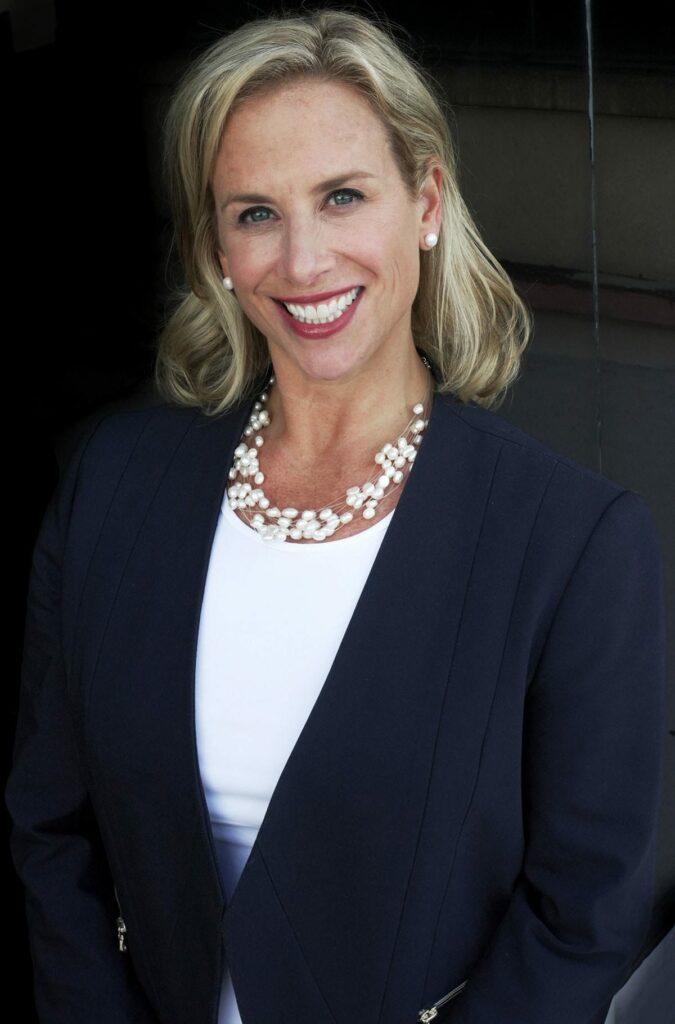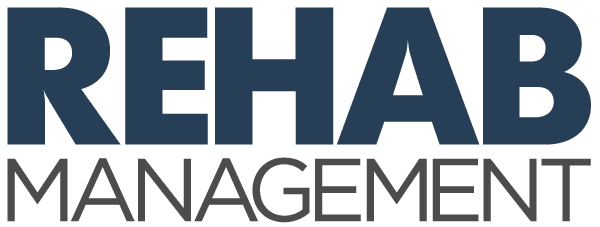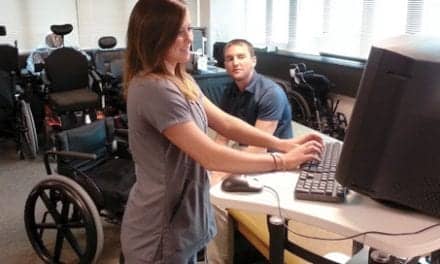The Christopher & Dana Reeve Foundation announces the appointment of Margaret (Maggie) Goldberg as President and CEO, effective immediately.
Goldberg has long served on the leadership committee of the Foundation, helping drive its mission to cure spinal cord injury by advancing innovative research and improving the quality of life for individuals and families impacted by paralysis. In her new role, she will unveil a fresh approach to the Foundation’s research portfolio and establish new collaborative partnerships to bring greater awareness and attention to the needs of the paralysis community.
At 16 years old, Goldberg broke her C2 vertebrae as a passenger in a car accident. She recovered fully, but her injury set her on a mission-driven career path to work on behalf of the paralysis community. Working closely with Christopher and Dana Reeve, she helped establish the only national paralysis-focused organization centered around a dual mission – Today’s Care. Tomorrow’s Cure, a media release from the Christopher & Dana Reeve Foundation explains.

“Throughout my career, my mission has been to ensure that people living with paralysis are supported to live empowered and independent lives. As CEO, I will continue to advocate and push to accelerate research toward cures, expand community outreach, and provide resources to elevate the voices and needs of our community and achieve greater representation. Those living with paralysis must have a seat at the table to achieve real equality.”
— Margaret (Maggie) Goldberg
Momentum for Today’s Care. Tomorrow’s Cure
Goldberg has dedicated over 20 years to the Reeve Foundation and its community, holding numerous executive roles at the Foundation during her tenure. Most recently, she served as Chief Operating Officer, providing the leadership, management, and vision to strategically grow the organization. Prior to that, she served as Vice President of Policy and Programs, which included overseeing the Foundation’s National Paralysis Resource Center (PRC).
The PRC – funded by an $8.7 million-dollar federal cooperative agreement from the Administration for Community Living, part of the U.S. Department of Health and Human Services – provides comprehensive information, resources and referral services to individuals impacted by paralysis. Since its opening in 2002, more than 110,000 people have received one-on-one assistance from the PRC, accessing vast resources and free personalized support from its programs. Goldberg has also served as Senior Vice President of Marketing and Communications, a position she held for 13 years. In this capacity, she worked to bring awareness to the full impact of spinal cord injury, such as the life-threatening complications that exist beyond immobility.
Among Goldberg’s highest priorities in her new role is launching a modern approach to the Foundation’s scientific endeavors – a new platform for funding collaborative research from the bench to the bedside, designed to address key roadblocks along the scientific continuum and accelerate progress toward meaningful therapeutics. Goldberg is uniquely suited to this effort, having helped launch the PRC and grow its footprint to become the nation’s preeminent destination for care.
Until recently, the prevailing dogma among spinal injury physicians, neurologists, and neurosurgeons was that the spinal cord was incapable of repair or regeneration once damaged. Only in the last 40 years has scientific research begun in earnest to address SCI, and today innovative therapies and cures are finally in sight. However, spinal cord injuries are incredibly complex, and every individual injury is unique. Progress has been steadily made in understanding the biological mechanisms of the condition, and now the gap between lab-based discovery science and approved therapies that bring real help to people must be addressed, the release continues.
“The Reeve Foundation has long focused on uniting the brightest minds in the field to develop and deliver real-world treatments that will move the field closer to cures for spinal cord injury. Now, more than ever, this requires global coordination and collaboration among SCI stakeholders, scientific and medical leadership, regulatory bodies and purposeful investors,” Goldberg adds. “Also paramount to clinical translation is an ecosystem – and funding – that supports all aspects of therapeutic development – from clinical trial design to regulatory approval to reimbursement, and more.”
The Foundation’s overarching approach to research has always been and continues to be to pursue every opportunity to enhance the health and quality of life of individuals living with paralysis by translating scientific breakthroughs into vital new therapies – many “shots on goal,” says Goldberg.
- This past February, the Foundation announced a strategic partnership with the UK’s International Spinal Research Trust (ISRT) to co-develop a research strategy with a joint focus on chronic injury, combination approaches and clinical translation.
- The Foundation has begun making forays into research-driven financial investments. These include equity partnerships with ONWARD, a Netherlands-based company that has developed breakthrough technology currently in global clinical trials that deliver targeted, programmed stimulation of the spinal cord to restore movement and other functions; and Axonis, an emerging biotech advancing breakthrough research to develop therapies for neurological disorders. These partnerships are illustrative of the Foundation’s evolving approach to advancing cures by providing support and funding for the most promising pipeline therapies.
- Support for The Big Idea, a groundbreaking campaign to fast-track the next phase of epidural stimulation research, continues as the trial works toward full enrollment in late 2022.
- Finally, as it advances its research agenda and program, the Foundation will also continue to create pathways for donors of all levels to contribute to its search for cures.
Goldberg’s vision for the paralysis community is that they are actively engaged in changing what it means to be living with or caring for someone living with paralysis.
“Novel partnerships between advocacy groups and medical innovators can more effectively drive solutions forward to market. Success lies in the creation of collaborative frameworks designed to overcome traditional hurdles and dramatically speed the pace of progress,” she continues. “It is also essential that those with lived experience of disease or disability inform products that are ‘fit-for-purpose’ by contributing input all along the way, from R&D to market rollout.”
The Right Leader at the Right Time
In her new role, Goldberg joins a small but influential cadre of women leading nonprofits, and she is only the second female CEO in the Reeve Foundation’s history as it embarks on its 40th anniversary year in 2022.
“Maggie has been a devoted and powerful presence within the Foundation and for the spinal cord injured community, providing hands-on support and partnership for more than 20 years. Her expertise, dedication, and passion will be invaluable in her role as CEO as we advance our mission to bring tangible cures and treatments to the community and improve the lives of all those impacted by paralysis. There was no one better suited to lead this revered organization, and I’m excited to continue working alongside her in this new chapter for the Reeve Foundation.”
— Jay Shepard, Board Chair, Reeve Foundation
[Source(s): Christopher & Dana Reeve Foundation, PR Newswire]





